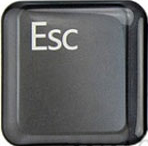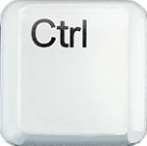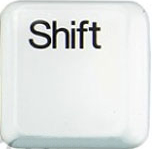User:Michaela/thesis: Difference between revisions
(→draft) |
|||
| (41 intermediate revisions by the same user not shown) | |||
| Line 1: | Line 1: | ||
'''Useful links:'''<br> | |||
[[A Guide to Essay Writing]] | |||
[[Thesis Guidelines]] | |||
Draft_ thesis skeleton: | |||
=ABSTRACT= | |||
<center> | |||
The traces of digital information are exponential ...<br> | |||
They contain various sources...<br> | |||
They travel, scattered, being trade - transacted or serve as a found footage for an artistic | |||
interventions...<br> | |||
Traces of digital data are tangible. Events or evidences, which meant to be deleted from a system...<br> | |||
they serve as a subject of recovery, revisit and exposure...''<br> | |||
</center> | |||
==INTRO== | |||
temporary unavailable will be filled soon! | |||
==CHAPTERS == | |||
Grad_Skeleton:<br> | |||
'''PART #1'''<br> | |||
<'''ctrl + C / ctrl +V chapter''' :.<br> | |||
[[File:Esc key 2.jpg|frameless]] | |||
'''question:''' digital object and its properties what has change from analog to digital? <br> | |||
'''argument''': tangible and intangible properties of the digital object or the lost of the physicality makes it difficult to apply the same principles.<br> | |||
use value and copy make hard to distinguish the copy from the original <br> | |||
'''argument''': digital object allows multiple copies of one single file, reproducing an accurate / exact copy of the original. Comparing with the analog object where every copy modifies the original.<br> | |||
Moreover each copying of the copy introduce / induce noise to the copy and the original itself. The digital object inherited share and distribution value. | |||
<br> | |||
<'''Del chapter''' :.<br> | |||
expanded storage / the impossibility to delete the digital file / missing erase button <br> | |||
the extend of the storage / memory capacity to save, preserve and archive. <br> | |||
Where the story of recovery of data from hard drives comes along ...<br> | |||
analog with the anecdote about Ghana disclosure of data. <br> | |||
------------------------------ | |||
'''PART#2'''<br> | |||
''' | <'''Shift chapter''':. | ||
[[File:Shift_key.jpg|frameless]] | |||
'''question''': How the copyright low is used to constrain and mimic the properties of analog? | |||
For example a digital file (pdf) is threaten the same way as a book.<br> | |||
revisit the copyright law and break the myth of the ownership of digital file.<br> | |||
'''argument''': Copyright enclosure is build on top of laws, applied to physical property. <br> | |||
It can not be applied to the digital objects because of the nature of the digital and the listed properties.<br> | |||
Please see --><br> | |||
#REDIRECT [[User:Michaela/Understanding copyright/ copyleft /copyfarleft]] | |||
<br> | |||
'''Case_study:''' >[http://www.seditionart.com/ Sedition] – an online art platform for selling art where an edition of a hundred unique digital copies are offered for sell. <br> | |||
"Limited edition of art for your digital life"<br> | |||
<'''Ctrl chapter''' :. | |||
[[File:Ctrl key.png|frameless]] | |||
'''argument''': The digital / digitization made us believe that the knowledge can be free / share and common for all. <br> | |||
This chapter will investigate “ cloud services” and fairness of access. Who is the actual owner of the content available online? Did it become a common property of all, pointed by Richard Barbrook or it is hold by other entity?<br> | |||
What if there is a time-based service that provides the users to obtain certain control over or expiration time on their content or applying a delete key?<br> | |||
'''Case_study''': [http://vanish.cs.washington.edu/ Vanish] is a research project and a software bundle, initiated by Roxana Geambasu, Amit Levy and Yoshi Kohno | |||
which aims to help users to preserve some control, by ensuring that the electronic data, posted on the web such as emails, massages, photos, as well as text becomes permanently unavailable after a specified period of time. | |||
Please see the annotation on Vanish project --><br> | |||
#REDIRECT [[User: Michaela/Notes and annotations]] | |||
==Bibliography (so far)== | |||
Kleiner. Dmytri, ''The Telekommunist Manifesto'' | |||
Hyves. Lewis, ''Common as air'' | |||
Banner. Stuart, ''American Property: A History of How, Why, and What We Own?'' | |||
Jefrey. Rosen, ''The end of forgetting'' | |||
Mayer-Schönberger. Viktor, ''Delete:The Virtue of Forgetting in the Digital Age'' | |||
Barbrook. Richard, <br> | |||
[http://constantvzw.org/verlag/spip.php?page=article&id_article=20&mot_filtre=9&id_lang=0 The Regulation of Liberty: free speech, free trade and free gifts on the Net] | |||
<br> | |||
<br> | |||
'''notes:'''<br> | |||
Blackstone. William //<br> | |||
Locke. John // Of property | |||
======================= | |||
possible entry_ art context&own practice??? | |||
I will map a research from art practices as appropriation, DADA, ready-made and SI applied to my own practice or the current grad project - retrieving hard drives and using the information out of them for an artistic purposes.<br><br> | |||
======================= | |||
'''links ( to be moved from this dir ) :<br>''' | |||
[http://www.pbs.org/frontlineworld/stories/ghana804/video/video_index.html Ghana digital dumping ground article] | |||
[http://boingboing.net/2009/06/25/illegal-e-waste-dump.html Illegal e-waste dumped in Ghana includes unencrypted hard drives full of US security secrets] | |||
Legend of multiple passes of overwriting:<br> | |||
http://grot.com/wordpress/?p=154 | |||
http://www.pcworld.com/article/209418/how_do_i_permanently_delete_files_from_my_hard_disk.html | |||
https://ssd.eff.org/tech/deletion | |||
http://security.stackexchange.com/questions/10464/why-is-writing-zeros-or-random-data-over-a-hard-drive-multiple-times-better-th | |||
[http://www.theguardian.com/world/video/2014/jan/31/snowden-files-computer-destroyed-guardian-gchq-basement-video | |||
theguardian_snowden-files-computer-destroyed]<br> | |||
Latest revision as of 10:42, 12 March 2014
Useful links:
A Guide to Essay Writing
Draft_ thesis skeleton:
ABSTRACT
The traces of digital information are exponential ...
They contain various sources...
They travel, scattered, being trade - transacted or serve as a found footage for an artistic
interventions...
Traces of digital data are tangible. Events or evidences, which meant to be deleted from a system...
they serve as a subject of recovery, revisit and exposure...
INTRO
temporary unavailable will be filled soon!
CHAPTERS
Grad_Skeleton:
PART #1
<ctrl + C / ctrl +V chapter :.

question: digital object and its properties what has change from analog to digital?
argument: tangible and intangible properties of the digital object or the lost of the physicality makes it difficult to apply the same principles.
use value and copy make hard to distinguish the copy from the original
argument: digital object allows multiple copies of one single file, reproducing an accurate / exact copy of the original. Comparing with the analog object where every copy modifies the original.
Moreover each copying of the copy introduce / induce noise to the copy and the original itself. The digital object inherited share and distribution value.
<Del chapter :.
expanded storage / the impossibility to delete the digital file / missing erase button
the extend of the storage / memory capacity to save, preserve and archive.
Where the story of recovery of data from hard drives comes along ...
analog with the anecdote about Ghana disclosure of data.
PART#2
<Shift chapter:.
question: How the copyright low is used to constrain and mimic the properties of analog?
For example a digital file (pdf) is threaten the same way as a book.
revisit the copyright law and break the myth of the ownership of digital file.
argument: Copyright enclosure is build on top of laws, applied to physical property.
It can not be applied to the digital objects because of the nature of the digital and the listed properties.
Please see -->
Case_study: >Sedition – an online art platform for selling art where an edition of a hundred unique digital copies are offered for sell.
"Limited edition of art for your digital life"
<Ctrl chapter :.

argument: The digital / digitization made us believe that the knowledge can be free / share and common for all.
This chapter will investigate “ cloud services” and fairness of access. Who is the actual owner of the content available online? Did it become a common property of all, pointed by Richard Barbrook or it is hold by other entity?
What if there is a time-based service that provides the users to obtain certain control over or expiration time on their content or applying a delete key?
Case_study: Vanish is a research project and a software bundle, initiated by Roxana Geambasu, Amit Levy and Yoshi Kohno
which aims to help users to preserve some control, by ensuring that the electronic data, posted on the web such as emails, massages, photos, as well as text becomes permanently unavailable after a specified period of time.
Please see the annotation on Vanish project -->
- REDIRECT User: Michaela/Notes and annotations
Bibliography (so far)
Kleiner. Dmytri, The Telekommunist Manifesto
Hyves. Lewis, Common as air
Banner. Stuart, American Property: A History of How, Why, and What We Own?
Jefrey. Rosen, The end of forgetting
Mayer-Schönberger. Viktor, Delete:The Virtue of Forgetting in the Digital Age
Barbrook. Richard,
The Regulation of Liberty: free speech, free trade and free gifts on the Net
notes:
Blackstone. William //
Locke. John // Of property
===========
possible entry_ art context&own practice???
I will map a research from art practices as appropriation, DADA, ready-made and SI applied to my own practice or the current grad project - retrieving hard drives and using the information out of them for an artistic purposes.
===========
links ( to be moved from this dir ) :
Ghana digital dumping ground article
Illegal e-waste dumped in Ghana includes unencrypted hard drives full of US security secrets
Legend of multiple passes of overwriting:
http://grot.com/wordpress/?p=154
http://www.pcworld.com/article/209418/how_do_i_permanently_delete_files_from_my_hard_disk.html
https://ssd.eff.org/tech/deletion
[http://www.theguardian.com/world/video/2014/jan/31/snowden-files-computer-destroyed-guardian-gchq-basement-video
theguardian_snowden-files-computer-destroyed]

